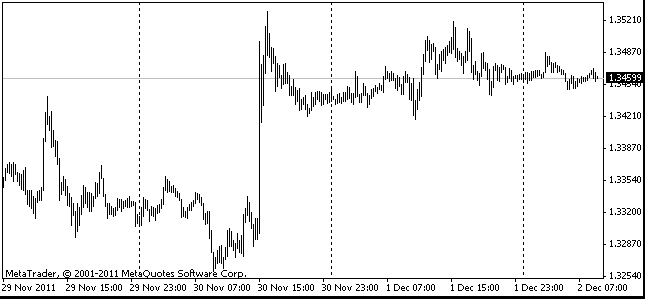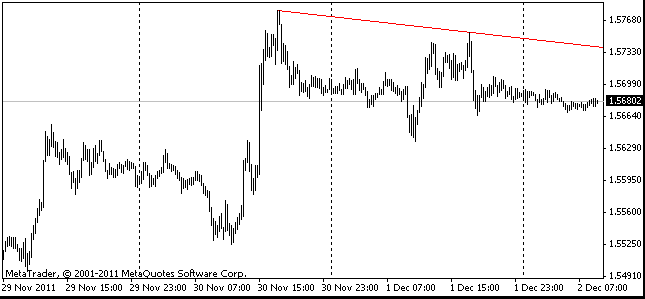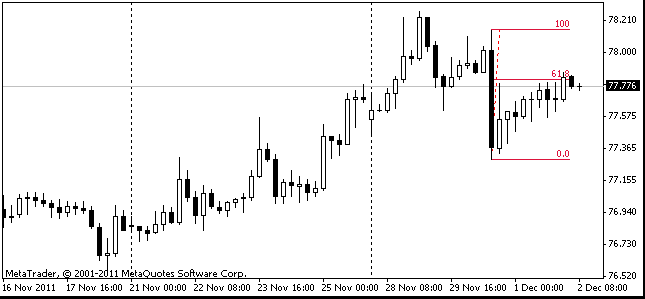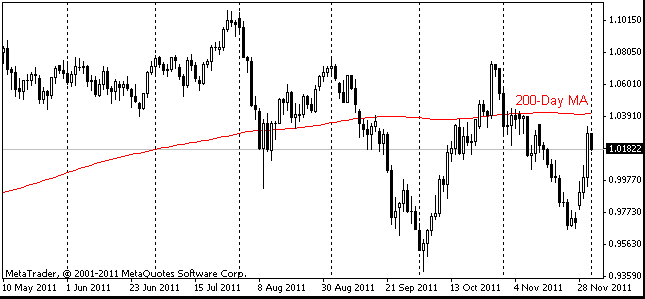EUR/USD
The tug-of-war in eurusd goes on. Strong impulses to sell end with gradual purchasing of the pair. Yesterday the lightning sale, which pushed the euro down straight by 60 pips in a bit more than an hour, turned into the victory of bulls. At the end of the day the positive news background finally gained the upper hand. And as a result, we are again about to break through 1.34. Surprising enough, but the good news came from Germany. The preliminary estimate showed quite a handsome increase in the Manufacturing and Services PMIs. In January the Manufacturing PMI grew to 48.8, still falling short of 50bp. The current rate is the highest for the last year, but it speaks only about the decreasing pace of decline. In the meantime, affairs in the service sector are pretty good. Here the PMI grew to 55.3, for the first time since June 2011. It's a very noticeable increase from the level of 48.4 in October. Upon the whole, both the estimates exceeded the expectations, which, combined with the positive ZEW index, speaks about economic revival in Germany. This unfortunately cannot be said about the French economy, where the situation is really wretched. For comparison, the country's Manufacturing PMI dropped to 42.9 and the Service one makes 43.6. The same rates were last observed only at the beginning of 2009, i.e. at the peak of the economic recession when the GDP shed by more than 1.5% over a quarter. The US employment stats are also very reassuring. Unemployment claims here decreased to 330K last week. It is the best rate since early 2008. The number of continuing claims is a bit higher than it was at the beginning of 2008, but nevertheless it gives confidence that the States are on the right track of economic recovery. All this taken into consideration, the new highs in the US stock exchanges don't look very surprising.

EUR/GBP
The pound doesn't share everybody's joy. It keeps sliding down in the anticipation of the preliminary GDP statistics for 4Q. Yesterday gbpusd failed to consolidate above 1.58. Now it is trading at 1.5770, but in the crosses with the euro and franc it is clearly seen that the attitude to the pound has changed. The euro/pound has grown to 0.8486. The sterling was that high only for a very short time a year ago and earlier at the end of 2011. The weekly charts show that EURGBP has entered the overbuy one, which hasn't been observed since late 2008. It's quite possible that the pair will reverse; we wouldn't recommend selling until the stabilization.

USD/JPY
USDJPY fell to the new 2 ½ -year low and against the euro the yen dropped to the 21-month low. It was spurred by a new portion of claims from the country's politicians. PM Deputy Nishimura said that imports wouldn't be adversely affected by growth of USDJPY to 100. Apparently, the yen bears will try to enter this zone. It's quite unlikely that such comments from the world's third country will be ignored by other world leaders and that they will miss a chance to put pressure on Japan or to launch the same measures on their side.

AUD/USD
The Australian dollar doesn't take part in the festivities. The yen's drop, the euro's appreciation and growth of prices for risky assets, including commodities, doesn't prevent audusd from drifting down. Yesterday the pair dropped to 1.0450. More and more market players start sharing our opinion that the CB has space to cut the rate and will resort to it in February. The Aussie buyers would better stand aside for a while.
